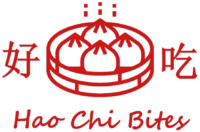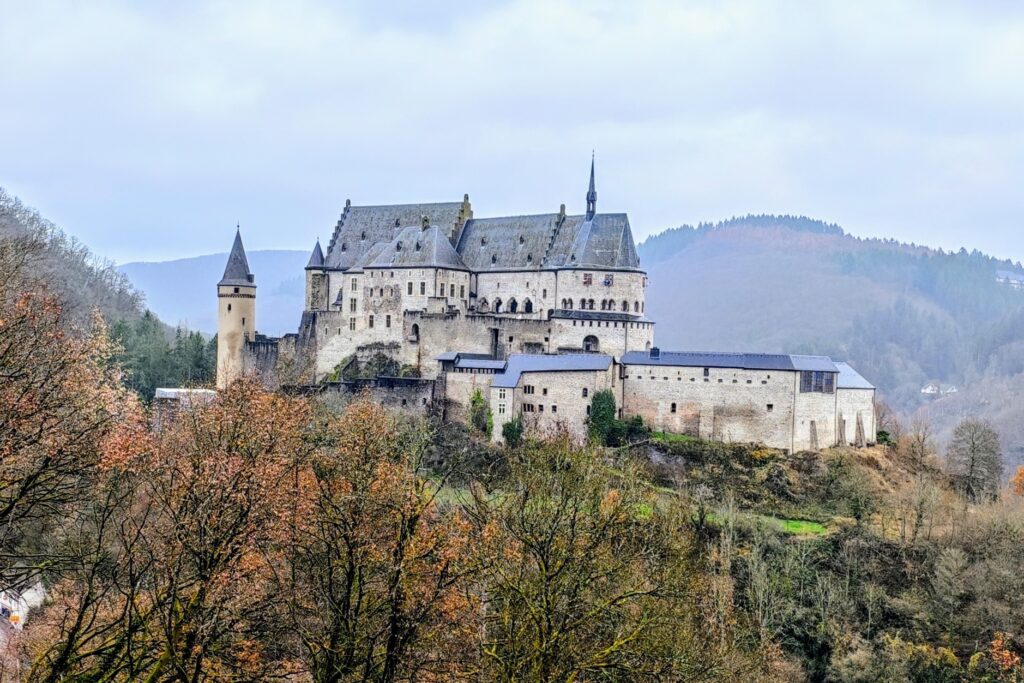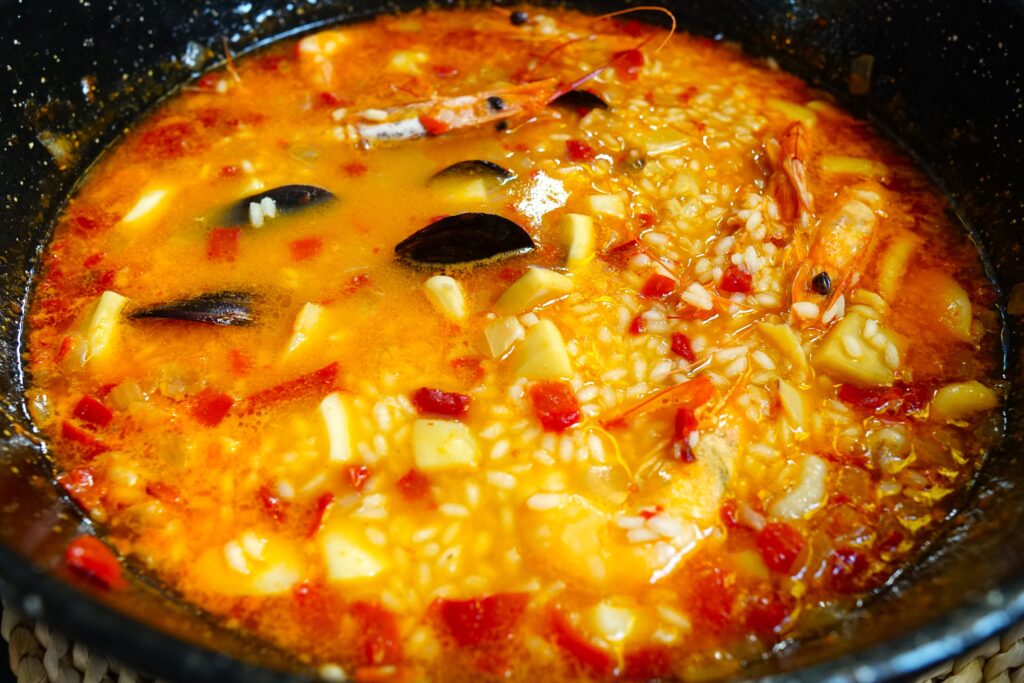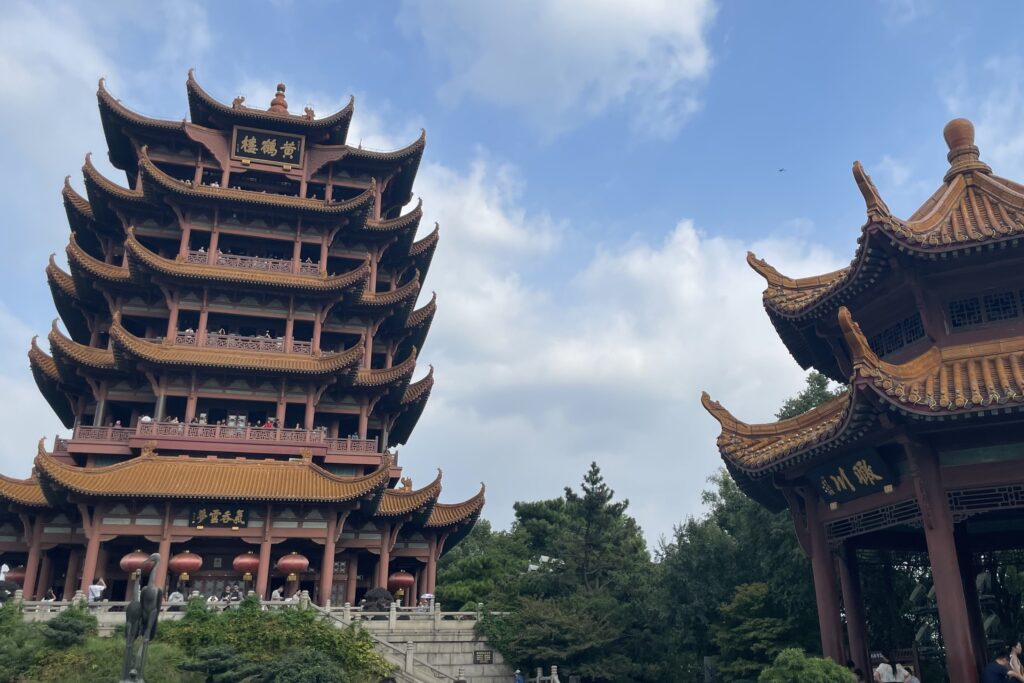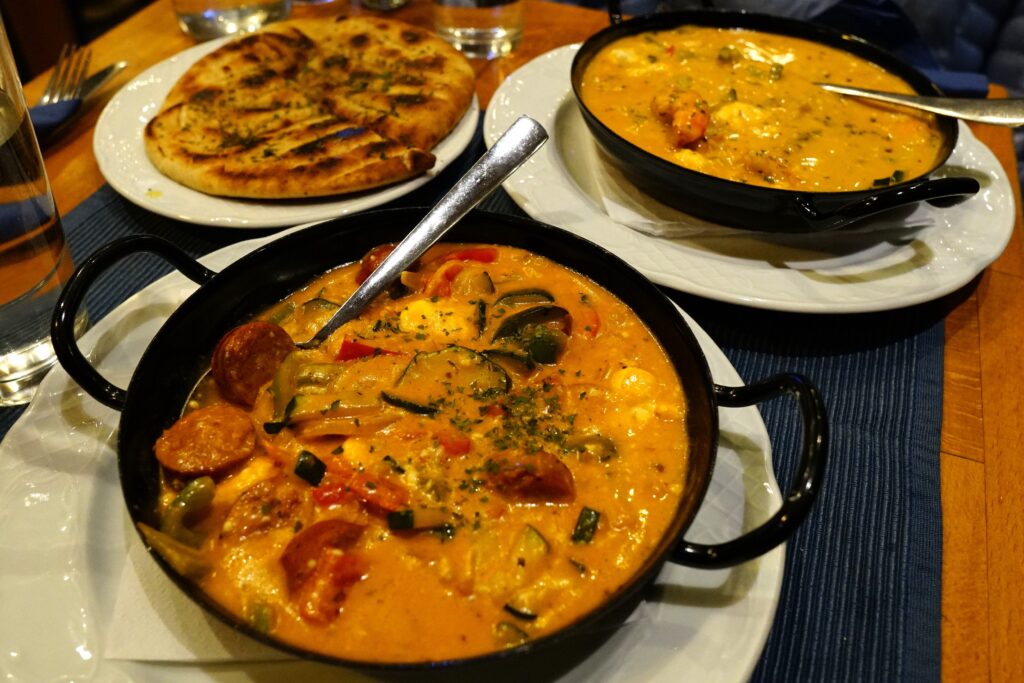Just 30 minutes’ drive from the center of Luxembourg City, Vianden Castle, perched atop a small hill, is like a portal to a medieval world. On the day of our visit, a light drizzle painted the air with a misty softness, blurring the edges of reality and casting an almost dreamlike veil over the scenery.
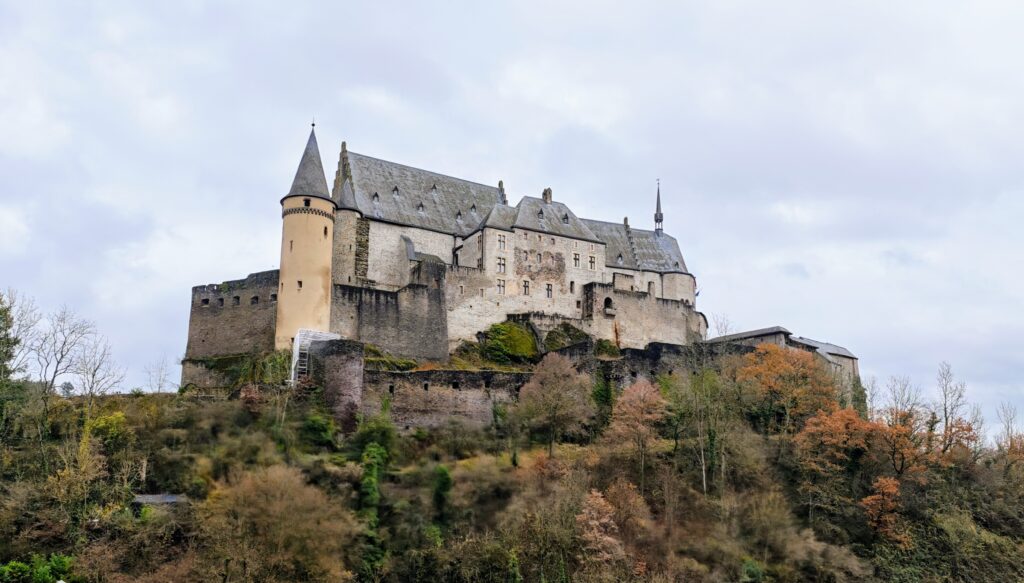
Arriving at the parking lot, a short path led us uphill to the castle. The rain-drenched scene unfolded—a deep autumn tableau of greens and golds stretching far into the misty horizon.
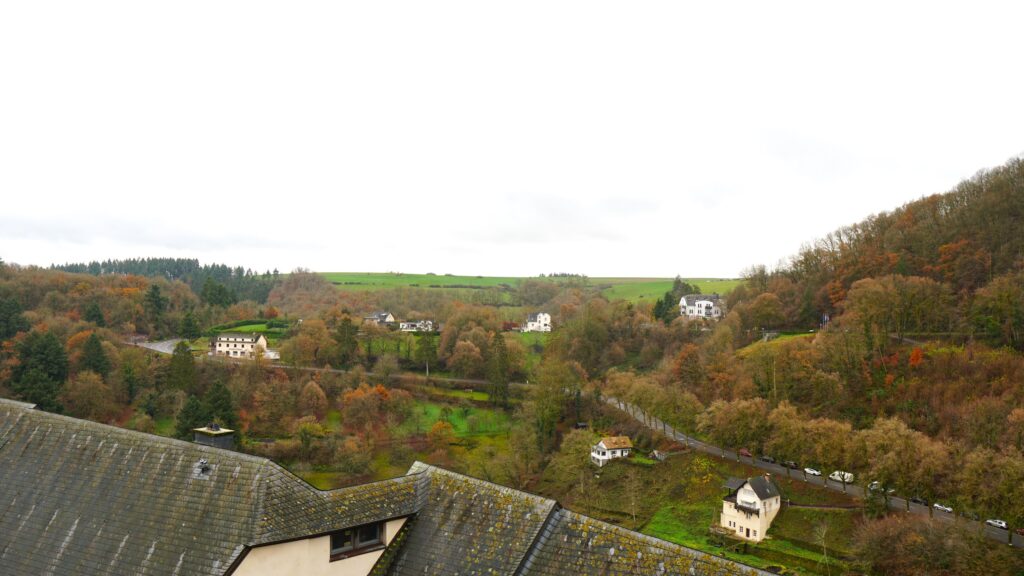
The castle’s beige-white walls, tinged with grey and brown, exude a weathered charm. Built in the 14th century by the noble Vianden family, the castle once served as both a fortress and a stately home. Its Gothic and Romanesque architecture reflects the aesthetics of its era.
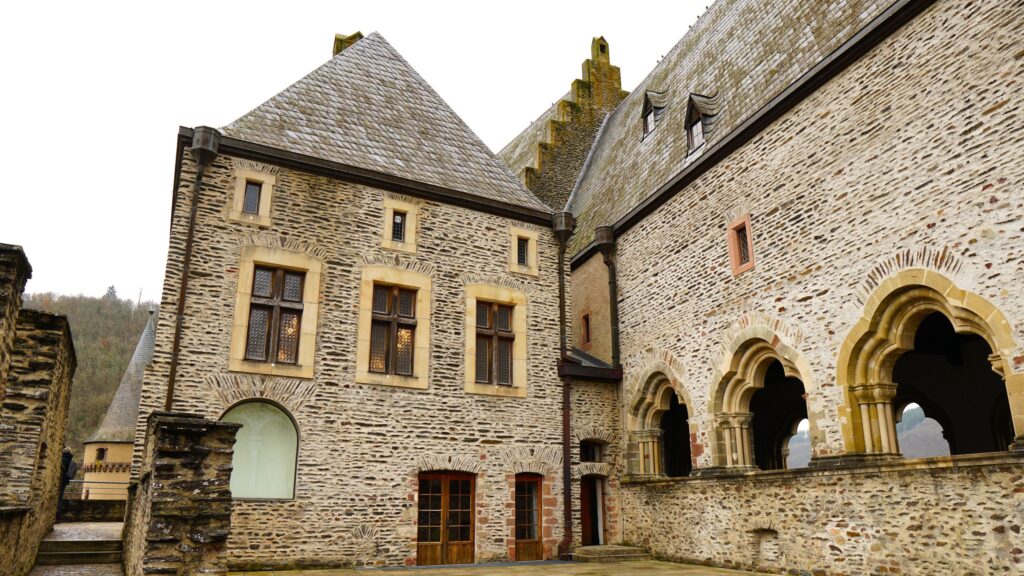
Inside, the kitchen displays ancient tools and spices neatly arranged in wooden chests, giving you a taste of the Middle Ages culinary world. Among the spices, we saw horseradish, a pungent staple of medieval cooking; saffron, a luxurious ingredient reserved for the wealthy; sesame, brought to Europe through extensive trade routes; and coriander, widely cultivated and commonly used in everyday recipes. Together, these spices show a fascinating blend of local and exotic ingredients, telling a rich trade history that helped shape the medieval culinary traditions.
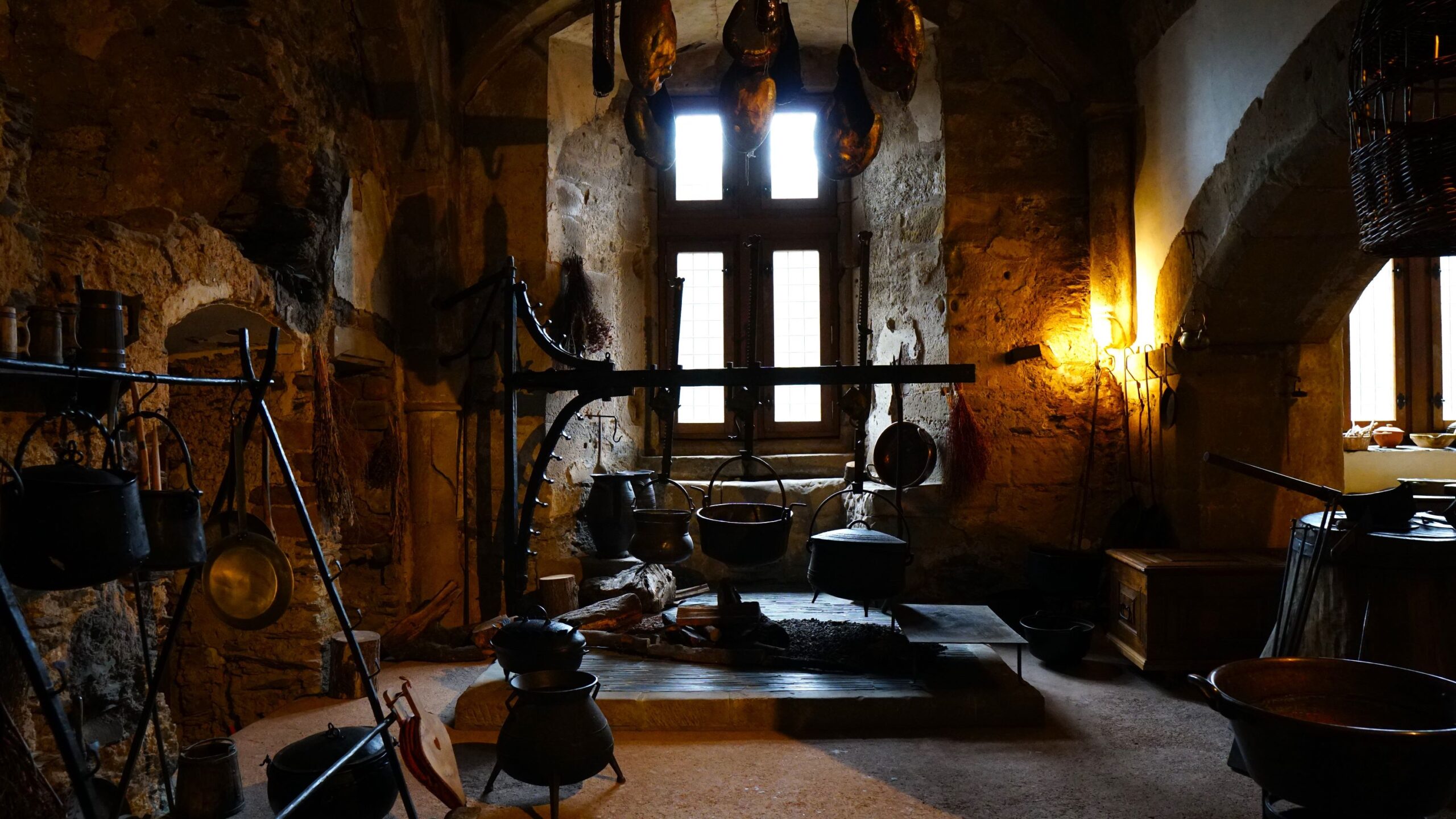
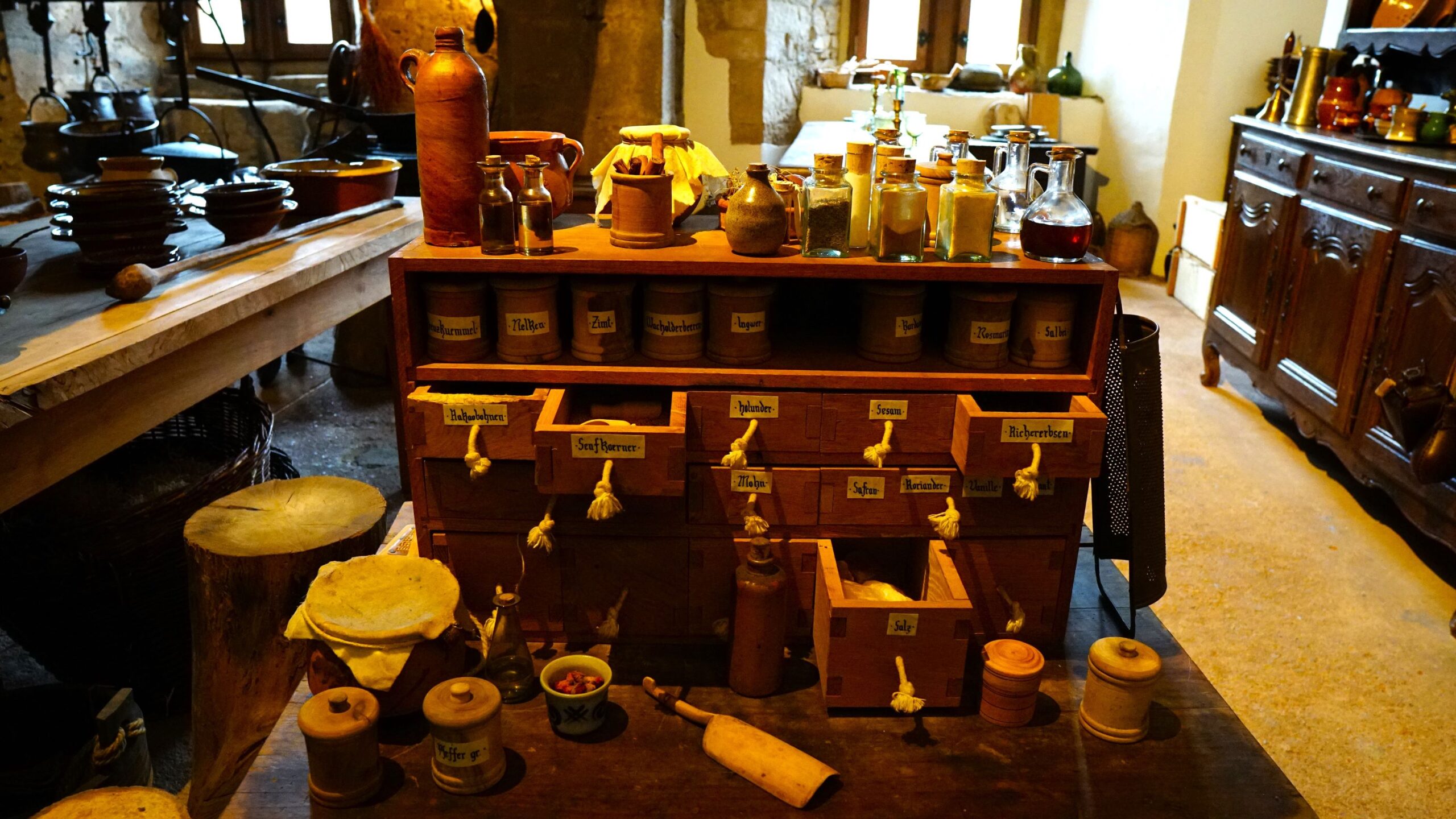
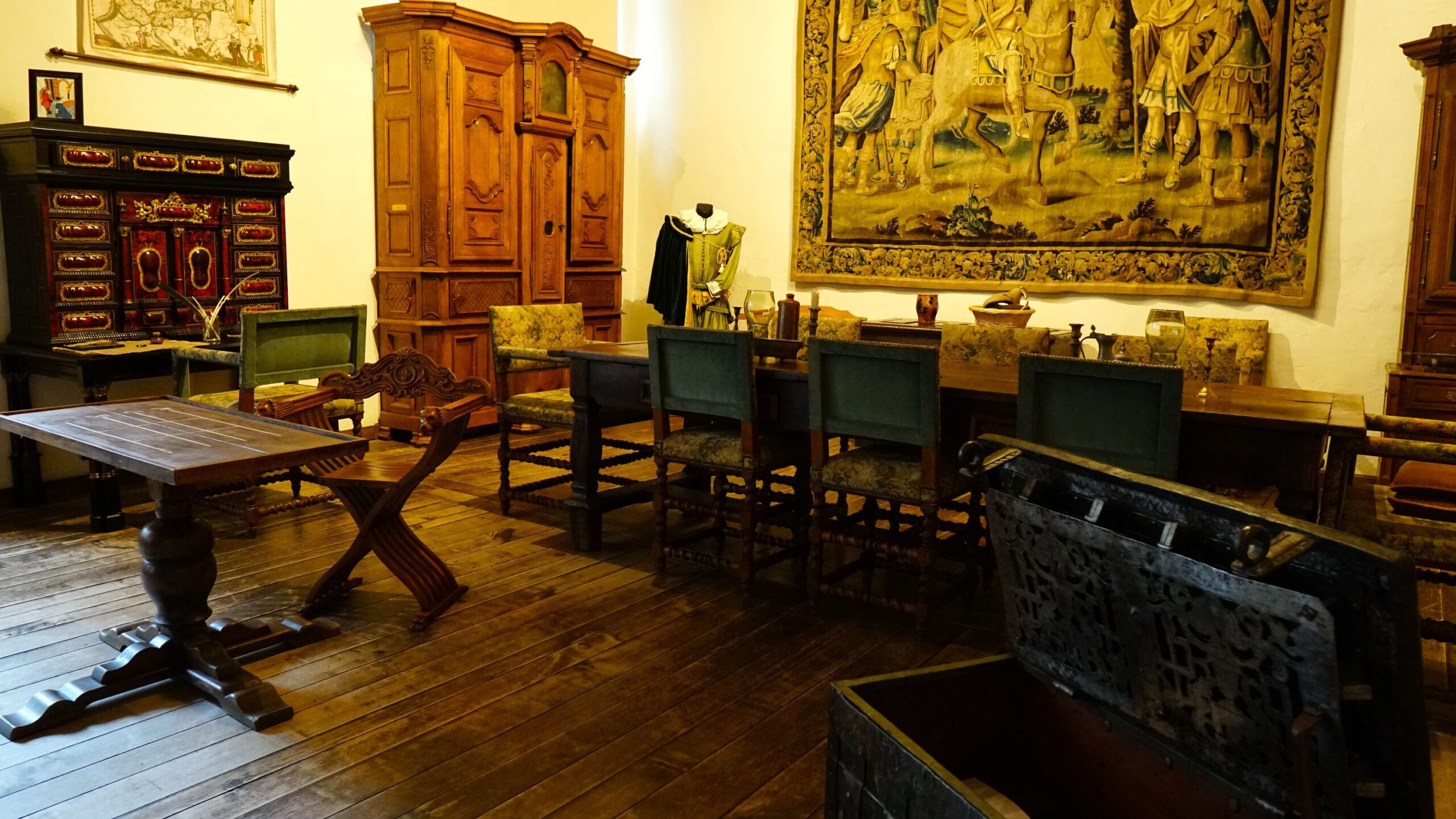
The wine cellar, dimly lit and lined with rows of aged barrels, carries a heavy air of old, evoking imaginations of grand feasts held within its cool, earthy walls. Long wooden tables, crudely hewn yet sturdy, would have been topped with flickering candles set in wrought-iron holders, their flames casting dancing shadows on the rough stone walls.
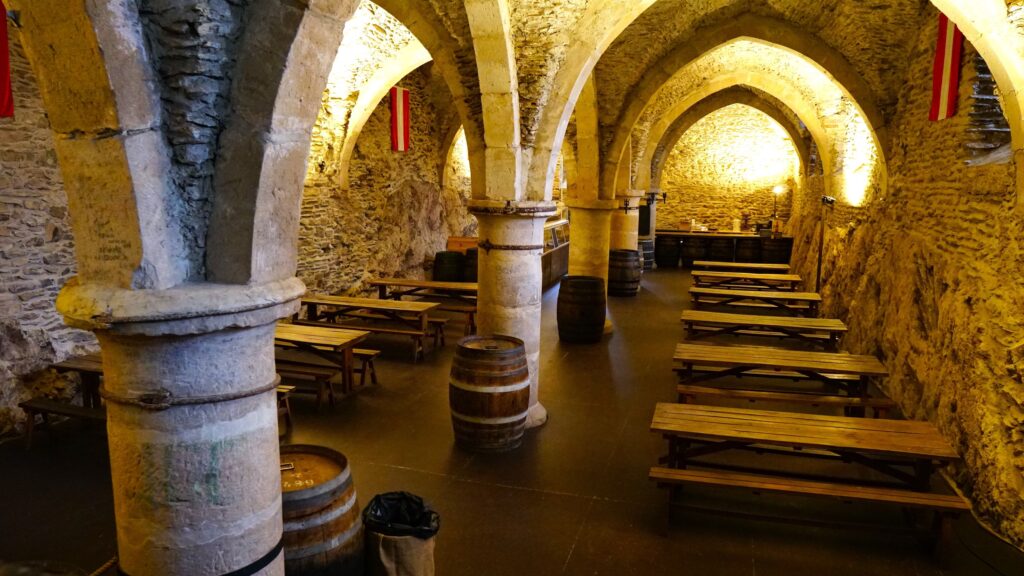
The scent of aged wine mingled with the aromas of roasted meats, spiced stews, and freshly baked bread. Diners, dressed in layered wool and linen, would gather around, raising goblets of wine to toast in celebration. Conversations and laughter echoed in the cellar as musicians played softly on lutes or pipes in the background as the feast continued, and I could almost feel myself drawn into the scene, like in one of my favorite games, The Witcher.
The bedrooms reveal parts of medieval daily times and sheds light on the social structure. Two lifelike mannequins, one being a lady and the other a maid, stand within the room. The lady is draped in a flowing gown of deep velvet, her dress adorned with intricate embroidery. The sleeves slightly billow out, shimmering with the subtle hues of the fabric. A delicate headpiece completes the regal look. Opulent and restrained, the clothing conveys her status while allowing her movement within the confines of the time’s social norms.
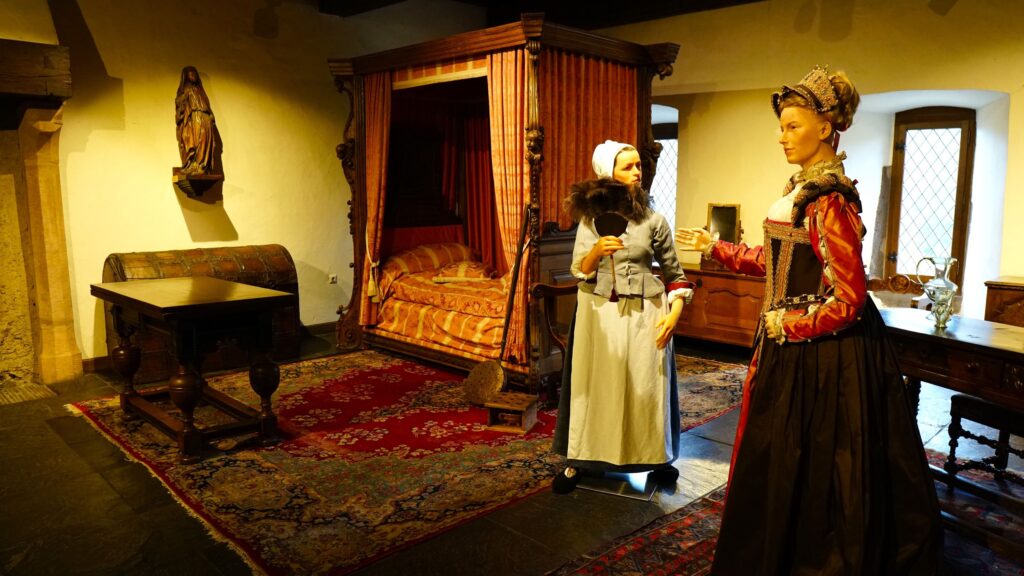
Beside her, the maid’s attire is much simpler. She wears a practical woolen dress, with a loose-fitting bodice and an apron tied around her waist, practical for performing chores – in keeping with the modest dress expected of servants.
Perhaps the most impressive room by look is the worship room, recreated in rich shades of brown and blue. This sanctuary, likely used for private prayers, exudes a colorful brightness, yet in a quiet solemnity.
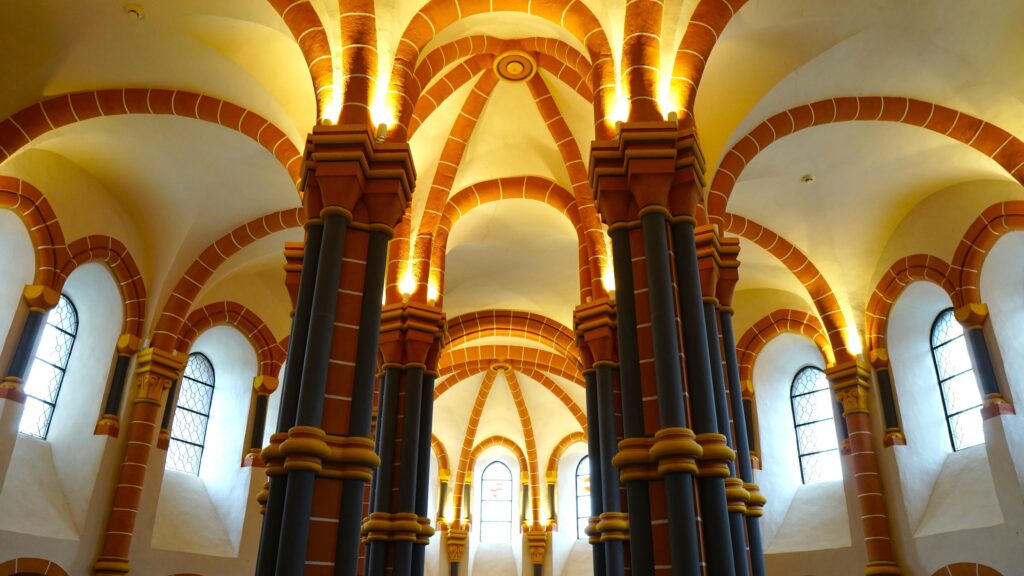
After exploring the castle, don’t miss the viewpoint at Castle Ridge, just a 5-10-minute walk from the castle. The path, flanked by golden-red foliage, leads to a spectacular view of the castle. The scene feels like poetry in motion: golden autumn leaves shimmering in the foreground, while the castle lofts gracefully against the distant mist-covered mountain hills.
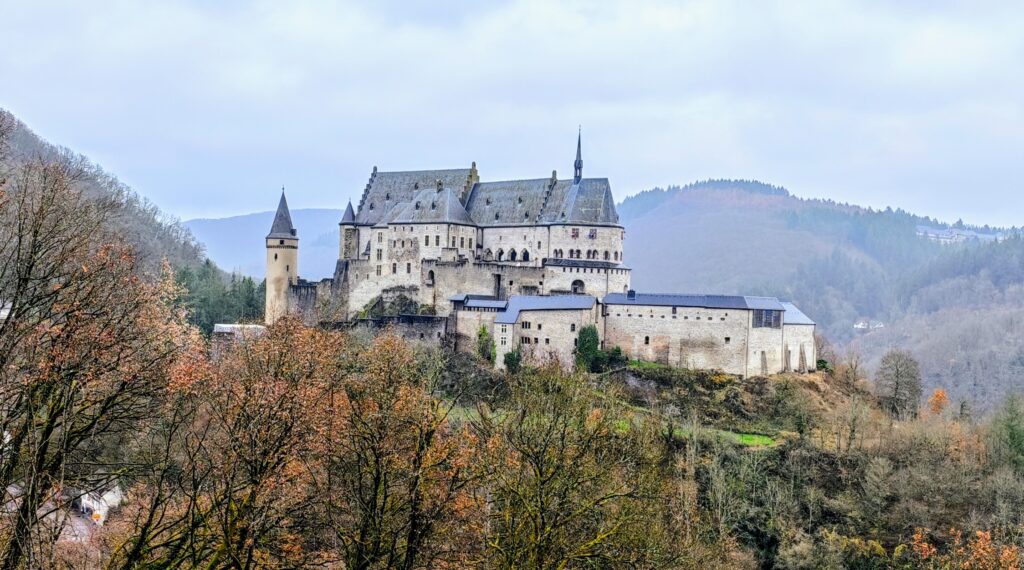
About a 30-minute drive from Vianden Castle is the famous Müllerthal hiking area, affectionately called Luxembourg’s Little Switzerland. Although parts of the trail were closed during our visit, including the signature spring site, it was still well worth the trip.
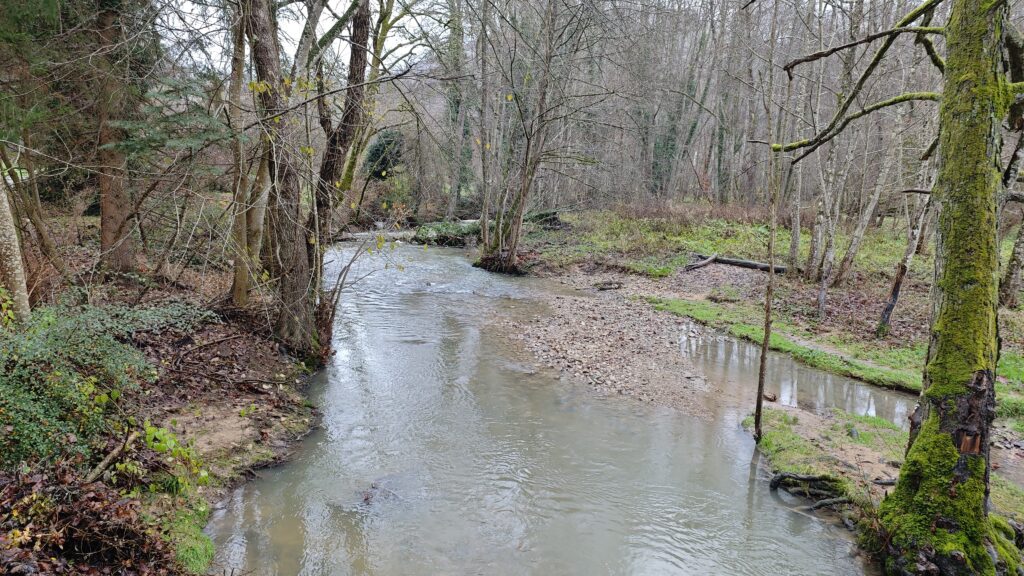
The path is alive with lush greenery and fiery red foliage. Towering pines stand steadfast, their deep green needles glistening from the rain. During quiet off-season, we had the forest almost just to ourselves—no crowds, just the rhythmic crunch of our boots on rain-softened earth.
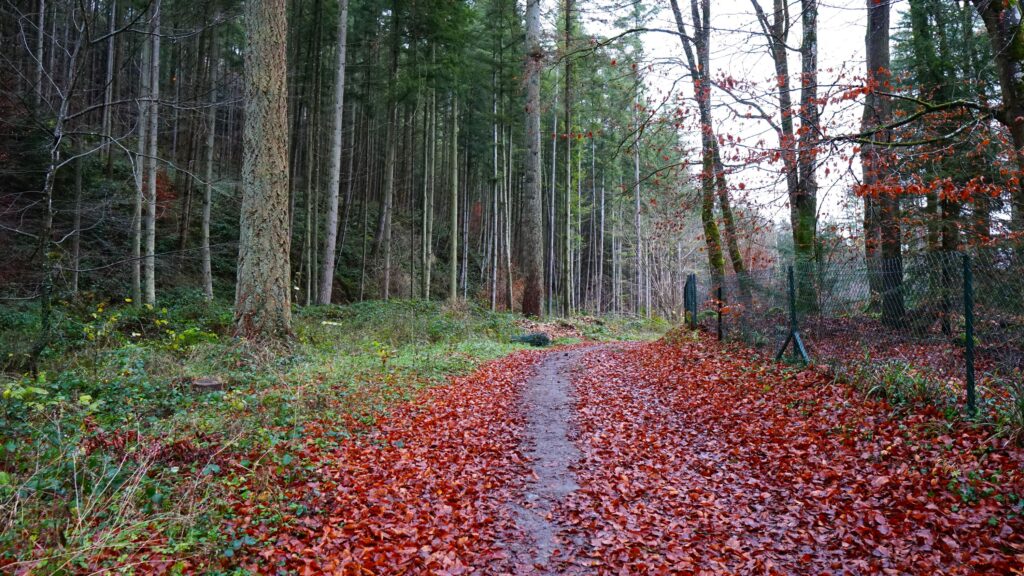
The rain-washed air carried a crisp freshness, invigorating with every breath. Soft streams murmured under quaint wooden bridges; their flow blending with whispers of autumn. The golden-red leaves carpeted the trail, lending a warm touch to the cool, moist afternoon.
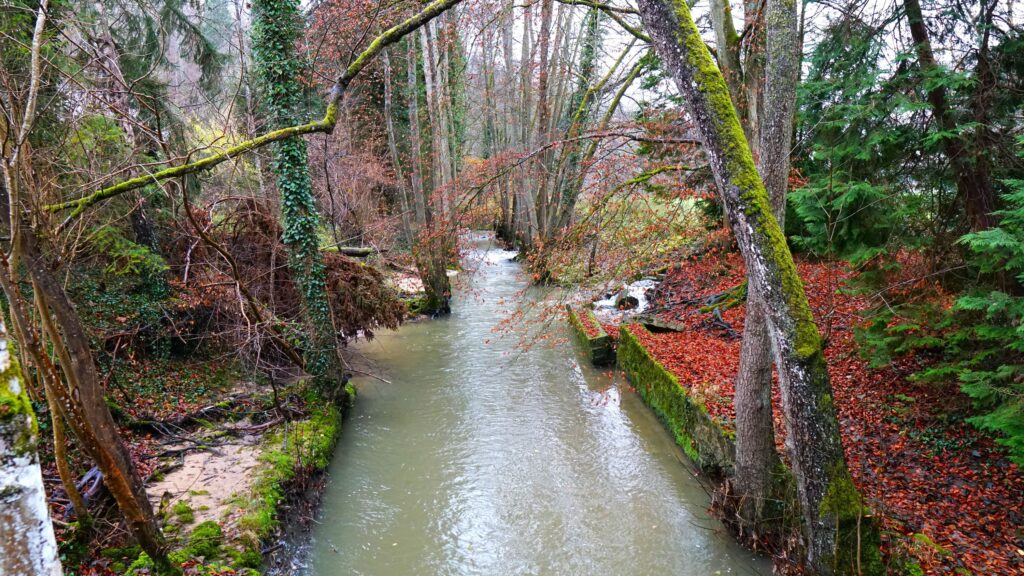
Our journey continued to Echternach, Luxembourg’s oldest city, around 15-minute drive from Müllerthal. Arriving at dusk, we felt like stepping into an old oil painting. The cobblestone streets, shimmering from the rain, reflected the glow of dim golden streetlights.
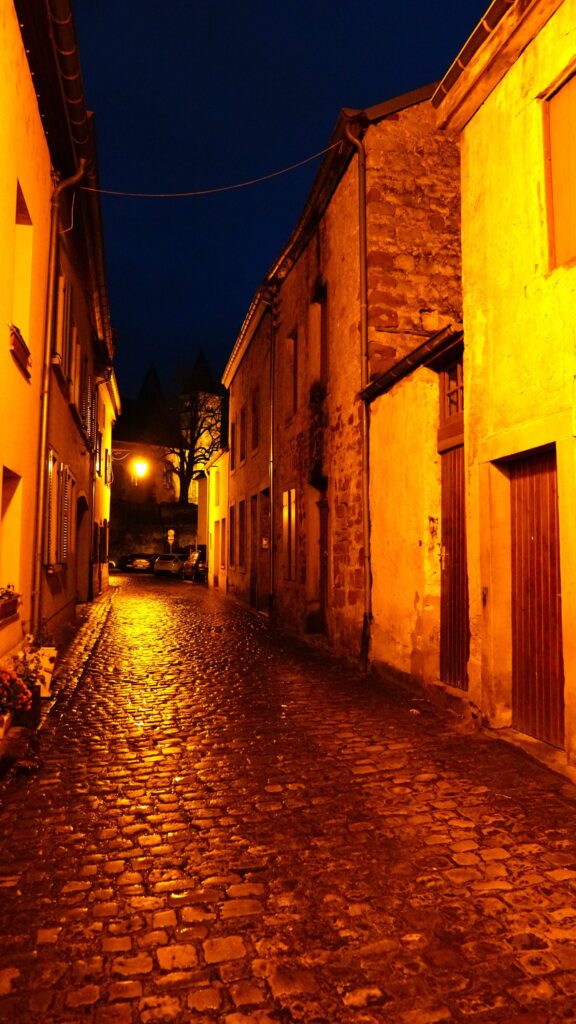
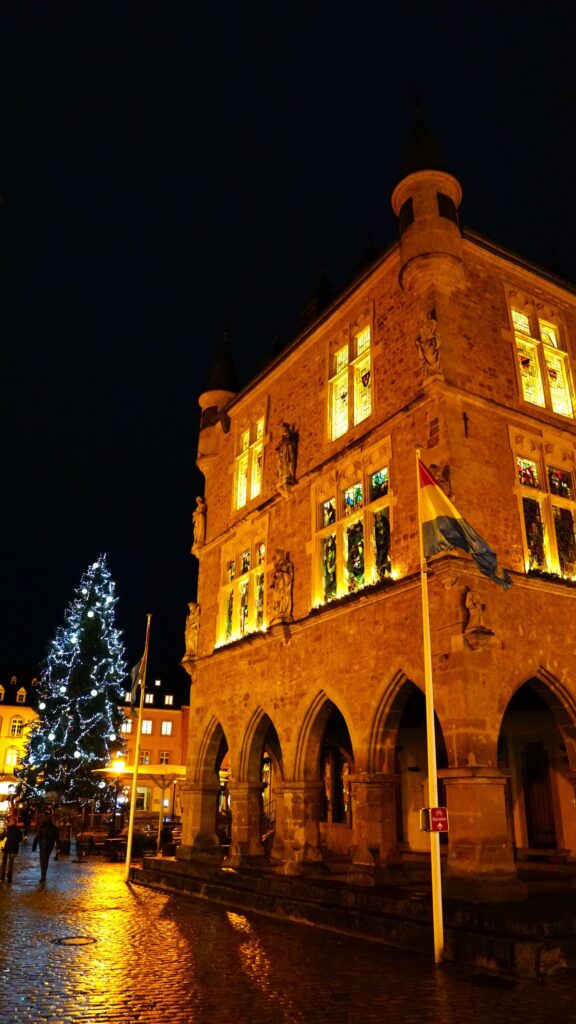
A towering Christmas tree with silver lights stood in the central square, while a quaint medieval fountain added a whimsical, fanciful touch to the scene.
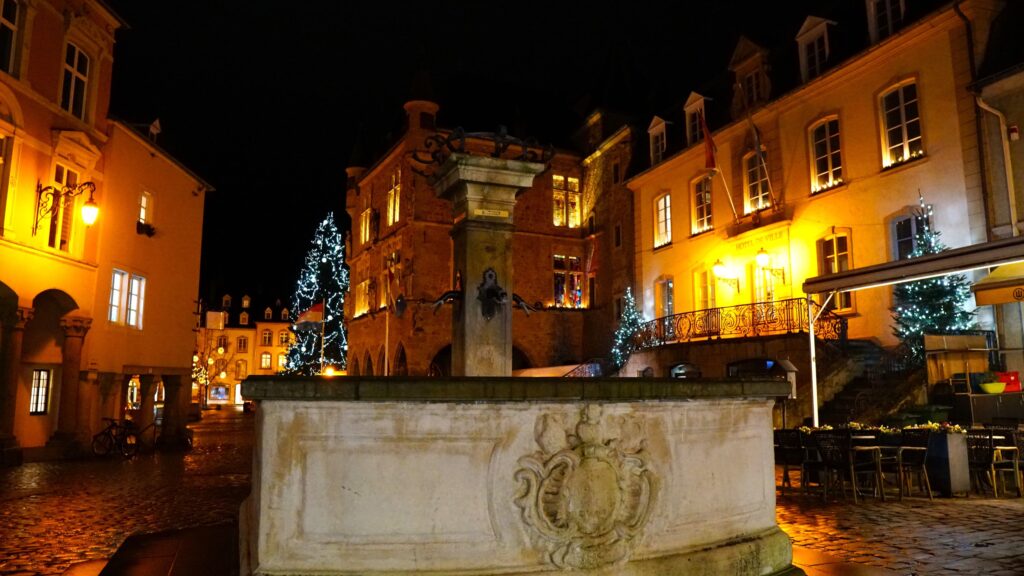
The city’s centerpiece is the Basilica of Saint Willibrord, an elegantly simple and robust structure with its Romanesque spires rising into the sapphire-blue evening sky. It’s a key religious site dedicated to Saint Willibrord, who played a vital role in spreading Christianity in the region during the early Middle Ages.
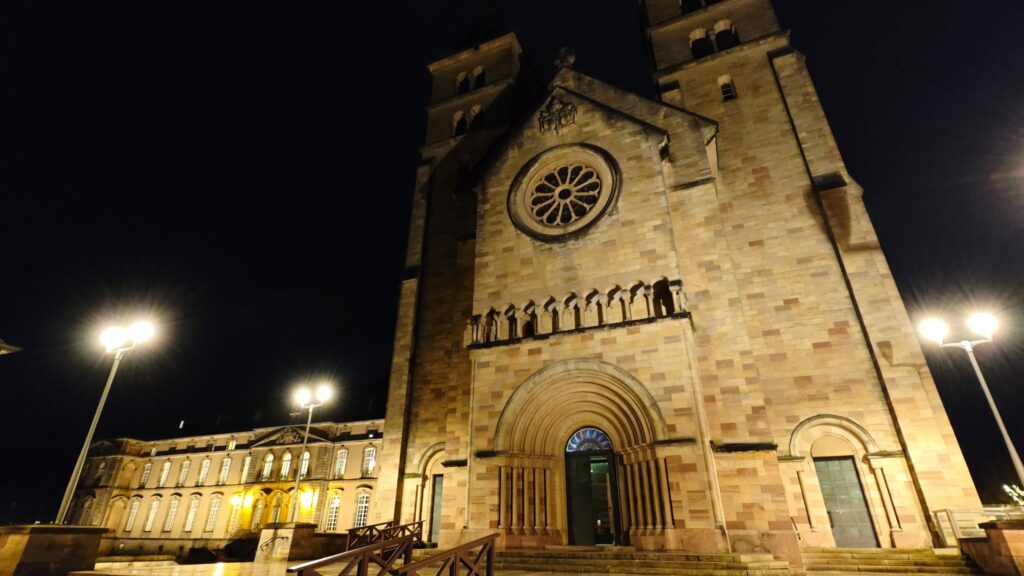
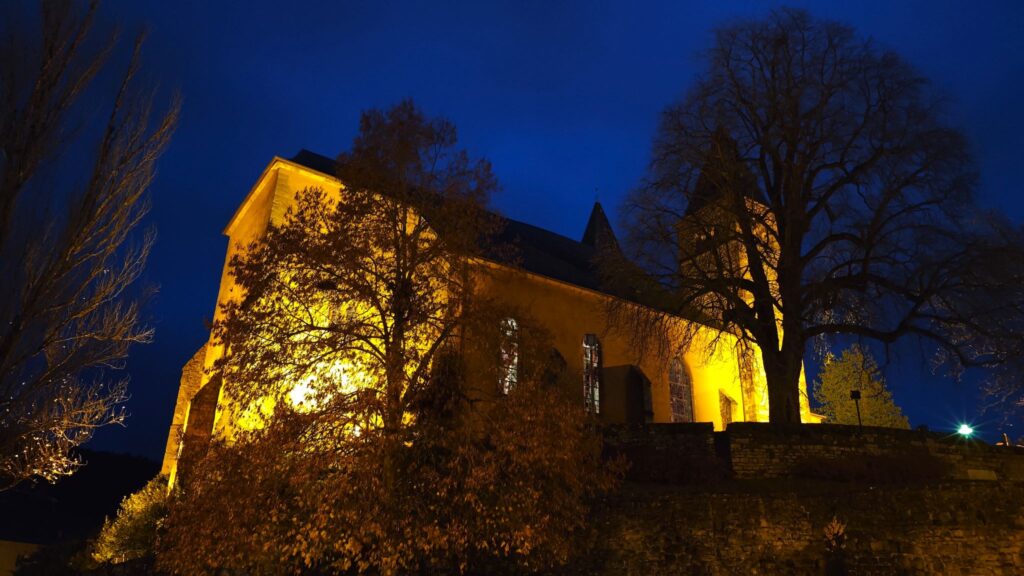
Adjacent to the basilica is the Abbey Complex of Echternach. The layout is spacious. Dating back to the early Middle Ages, the abbey was once a center of monastic life, and now, the buildings mainly house cultural and administrative purposes.
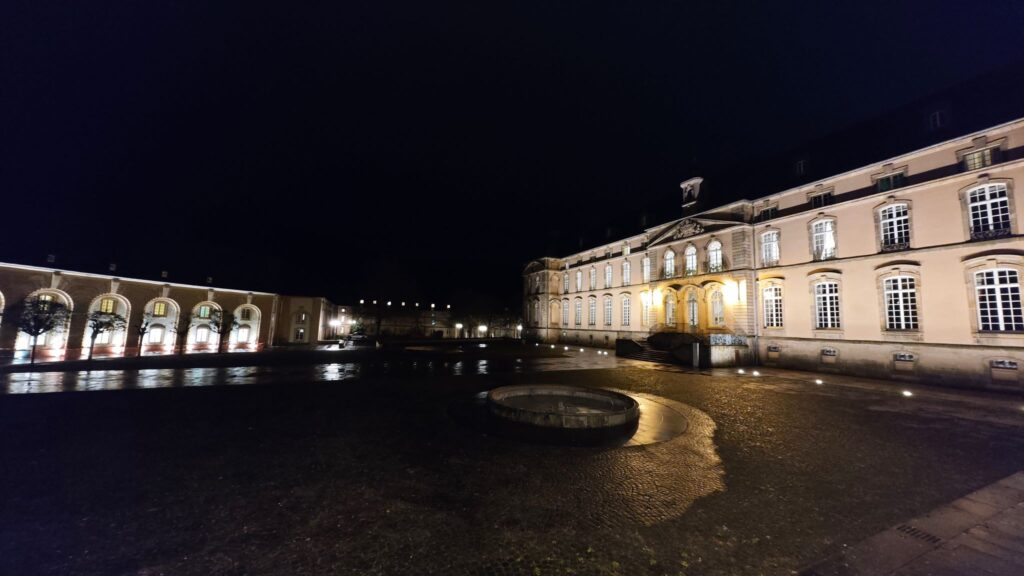
Quiet and almost deserted, walking through the old town felt as though time had paused. The air was filled with a sense of nostalgia, with the soft hues of the fading light, as if lifted straight from the brushstrokes of an oil painting. The faint Christmas decorations add a mellow radiance to the crisp autumn evening.

More tips for your visit:
- Check for Closures: Off-peak season may bring surprises—some sights or trails, like in Müllerthal, might be partly closed.
- Castle Hiking Trails: Explore the enchanting trails around Vianden Castle. It’s one of Luxembourg’s top castle walks and offers great views of the surrounding landscape. (Details here)
- Echternach: If you’ve got time, visit the serene Lake of Echternach and nearby woodlands for a peaceful retreat.
- Pack Smart: With plenty of hiking opportunities ahead, make sure to bring comfy shoes and layers for changing weather.
In the old town, we came across a cozy, family-run restaurant called An Haal. It offers a variety of dishes, from fresh salads and fish plates to steaks, schnitzels, pizzas, and pastas.
The first dish we tried was Tarte Flambée Forestière, a French-German culinary fusion that feels right at home in Luxembourg, a country where both influences are deeply woven into its gastronomy.
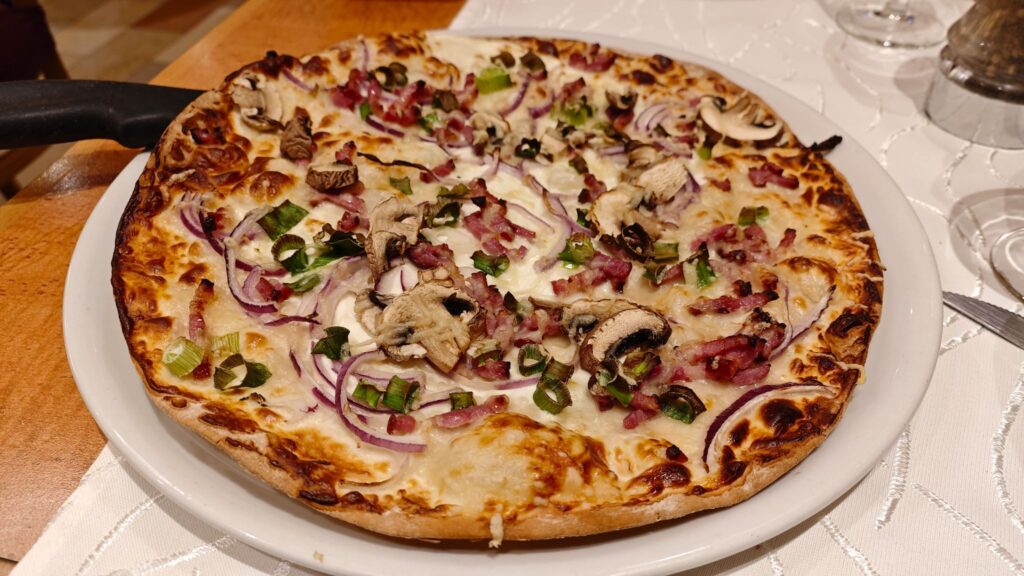
The base is a paper-thin crispy bread, its edges roasted to a beautiful golden-brown. Its delicate crunch gives way to a medley of toppings: smoky bacon, earthy mushrooms, and sweet onions complemented by fresh green onions. The melted cheese ties it all together, creating a creamy, savory layer that elevates every bite.
The next dish, Médaillons de Biche avec Chou Rouge Pomme et Spätzle, is a refined combination of French culinary elegance with hearty German influences.
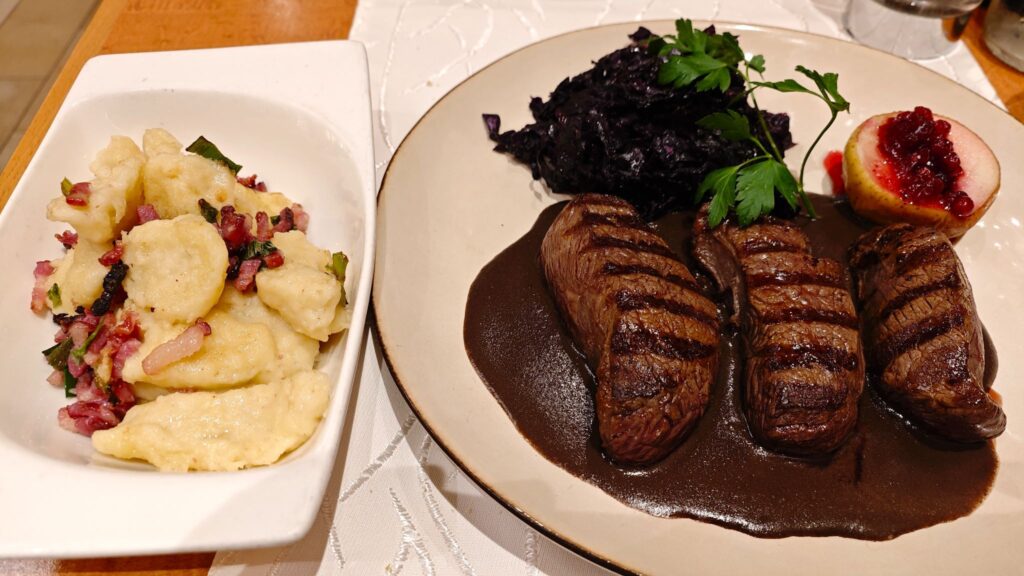
The medallions of venison (biche), cooked to medium-rare, are tender, juicy, and deeply flavorful. Their rich, slightly gamey taste is both exquisite and nuanced, offering a soft, melt-in-your-mouth texture while retaining a delicate chewiness. Fresh parsley on top lends a bright herbal finish.
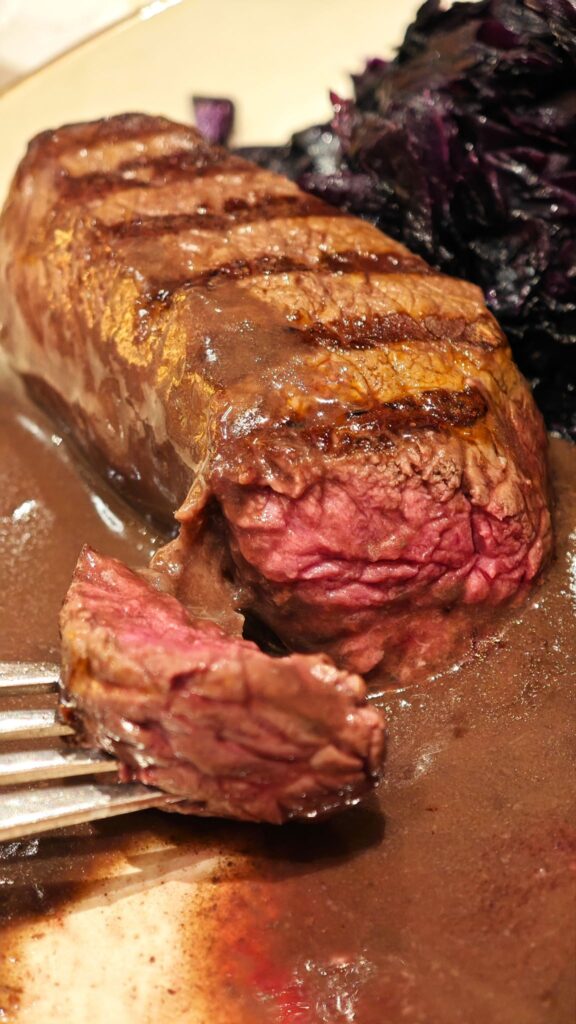
The accompanying sauce, infused with a robust red wine base, enhances the venison’s natural depth. Its tangy notes, balanced by a hint of sweetness, create a luxurious, velvety element that deepens the meat’s rich flavor.
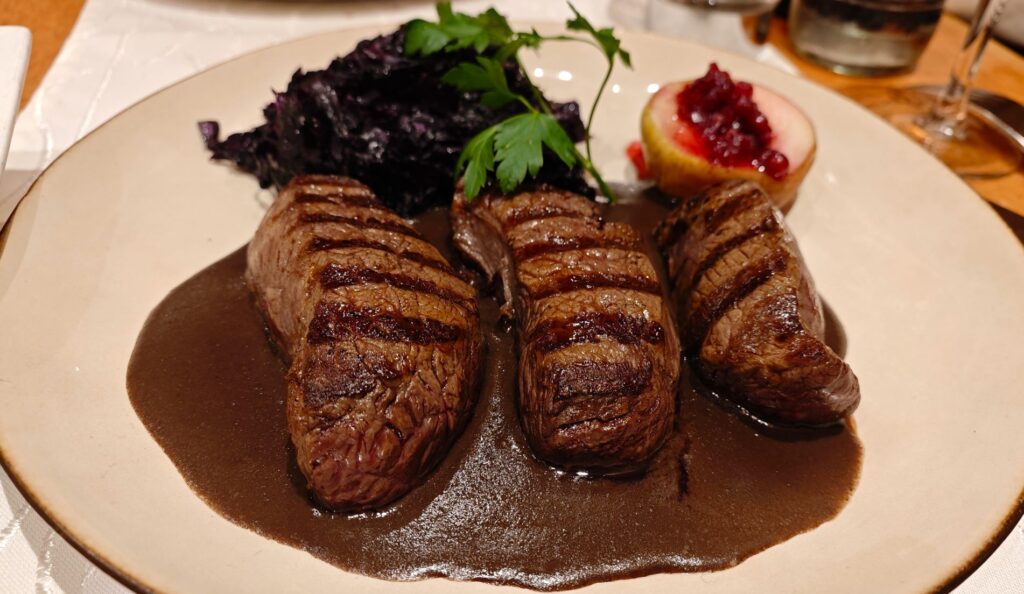
The red cabbage, likely stewed with apples, adds a sweet-sour contrast that brightens the dish, while the pear brings a juicy, honeyed flavor that goes very well with the venison’s savory depth. Pairing venison with fruit like pears is a classic European tradition to cut through the richness and highlight the meat’s luxurious profile.
This dish is rounded off with a German-style spätzle. Topped with fried green onions and bacon, the tender, pillowy noodles gain a smoky, crispy, savory complexity and provide a comforting base to this dish.
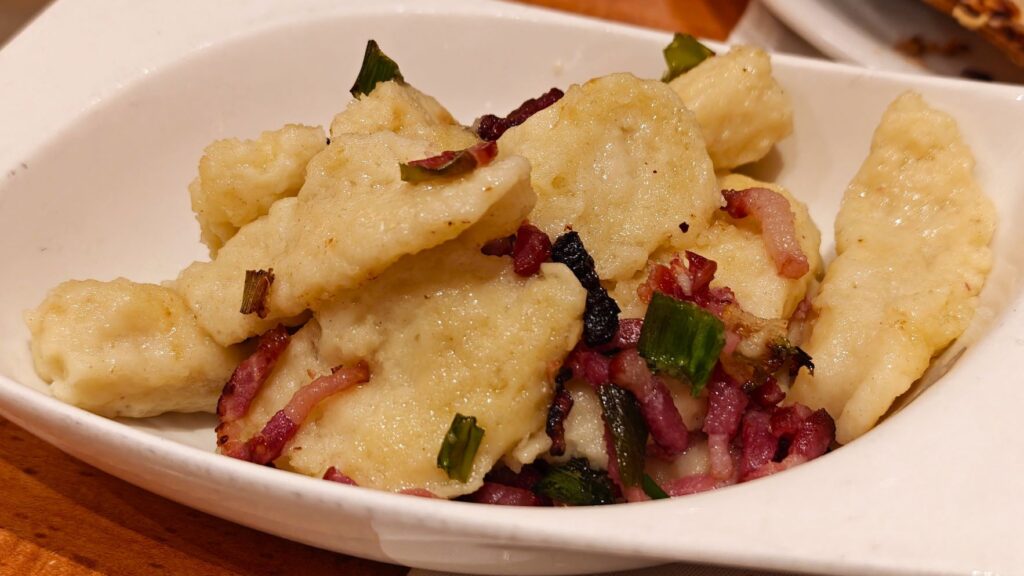
To end our meal on a satisfying note, we chose Profiteroles au Chocolat, a classic French dessert.
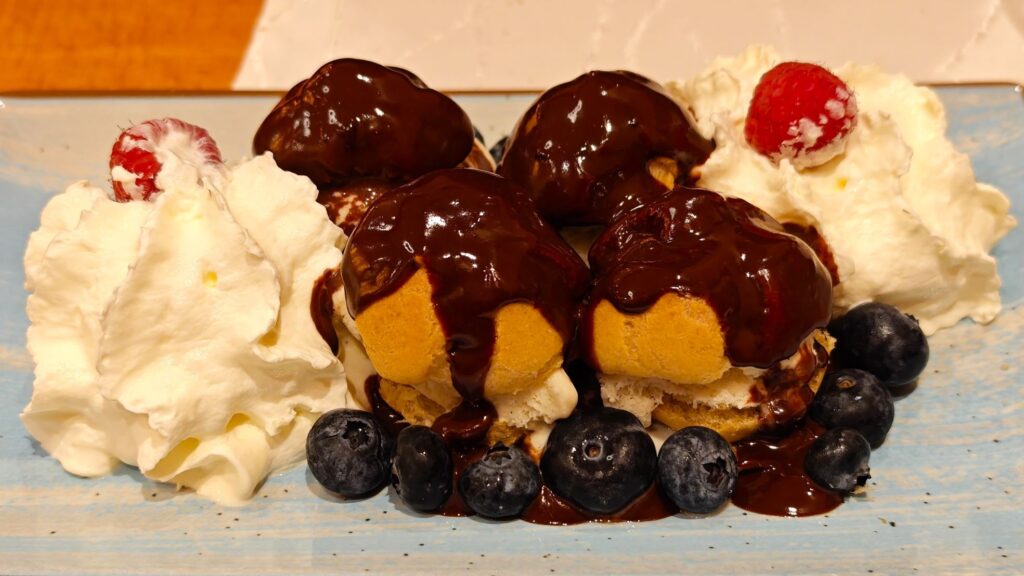
These small choux pastry puffs are filled with a luscious vanilla crème pâtissière. Mildly sweet and custard-like, the filling has a firm, yet velvety texture that contrasts wonderfully with the pastry’s airy shell. Each is topped with a generous drizzle of velvety dark chocolate that adds a rich, bittersweet depth.
Sided with light, airy whipped cream, the dessert takes on a cloud-like decadence, while tart rose berries and plump blueberries introduce a refreshing zing and juicy sweetness. The interplay of creamy, crisp, and fruity notes creates a very special and indulgent mouthfeel.
As our time in Luxembourg comes to a close, we’re setting our sights on our final stop: Dinant, Belgium. With its charming riverside views and historic landmarks, it’ll be the perfect place to wrap up this road trip. Stay tuned — our journey is not yet over!
